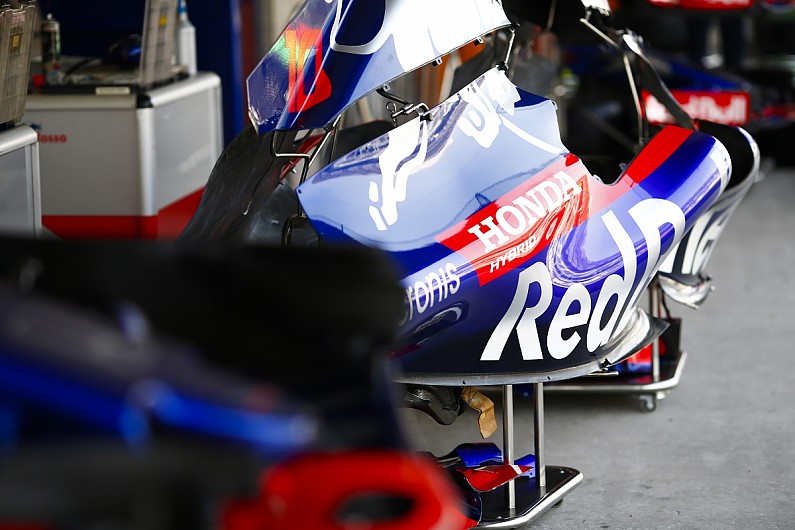Get unlimited access
You have only 5 articles remaining to view this month.
Toro Rosso’s STR13 Formula 1 car has become a sort of mobile laboratory for Red Bull and Honda in the final part of the 2018 season.
On the engine front, Honda has not been shy about using Toro Rosso’s car as a test bench this year – with extra grid penalties a price worth paying for accelerated power unit development.
Such rapid change on the engine front is not easy for the team either, with the ancillary coolers, pipework and other associated paraphernalia all having to be re-engineered to take into account the base architectural alterations.
The development push has not all been engine related, with Toro Rosso doing a lot on the aerodynamic front too.
At Austin last month it introduced an update that left drivers Pierre Gasly and Brendon Hartley very encouraged.
Due to the poor weather conditions on Friday, and only having one set of parts, the team decided it was best not to risk racing it in the United States.
It saved its full introduction for the South American races, when it could get a clearer understanding of the performance increases.
The new package included, but was not limited to, a revised front wing, bargeboard optimisations and a new sidepod deflector panel.
Inspired by the route taken by some of Toro Rosso’s rivals this season, the revised endplate design features a shorter reprofiled tail end, with another flap positioned between it and the back face of the wing stack (arrowed).
The wing also features a revised flap adjuster position, resulting in much less of the flap being affected by any manual adjustment.
This should empower the arched outer section of the wing, increasing the amount of outwash that it can generate.

The team also trialled a new set of bargeboards and sidepod deflectors, as it looks to improve flow along the car’s flanks.
The bargeboards, which have already been altered numerous times this year, featured a two-piece vertical element at the front (red arrow).
The number of deflectors also increased from two to three elements (white arrows), altering the point at which the surfaces meet the wake generated by the front tyre.
It’s worth noting that this element also features horizontal tail like extensions that control the shape and direction of the airflow that passes by them, in a similar fashion to other teams that use this sort of deflector configuration.
